The New 2024 Speedmaster First Omega In Space, Returning in Vintage Shape
The Speedmaster FOiS (First Omega in Space) is back, mixing vintage touches, modern movement and surprising details.
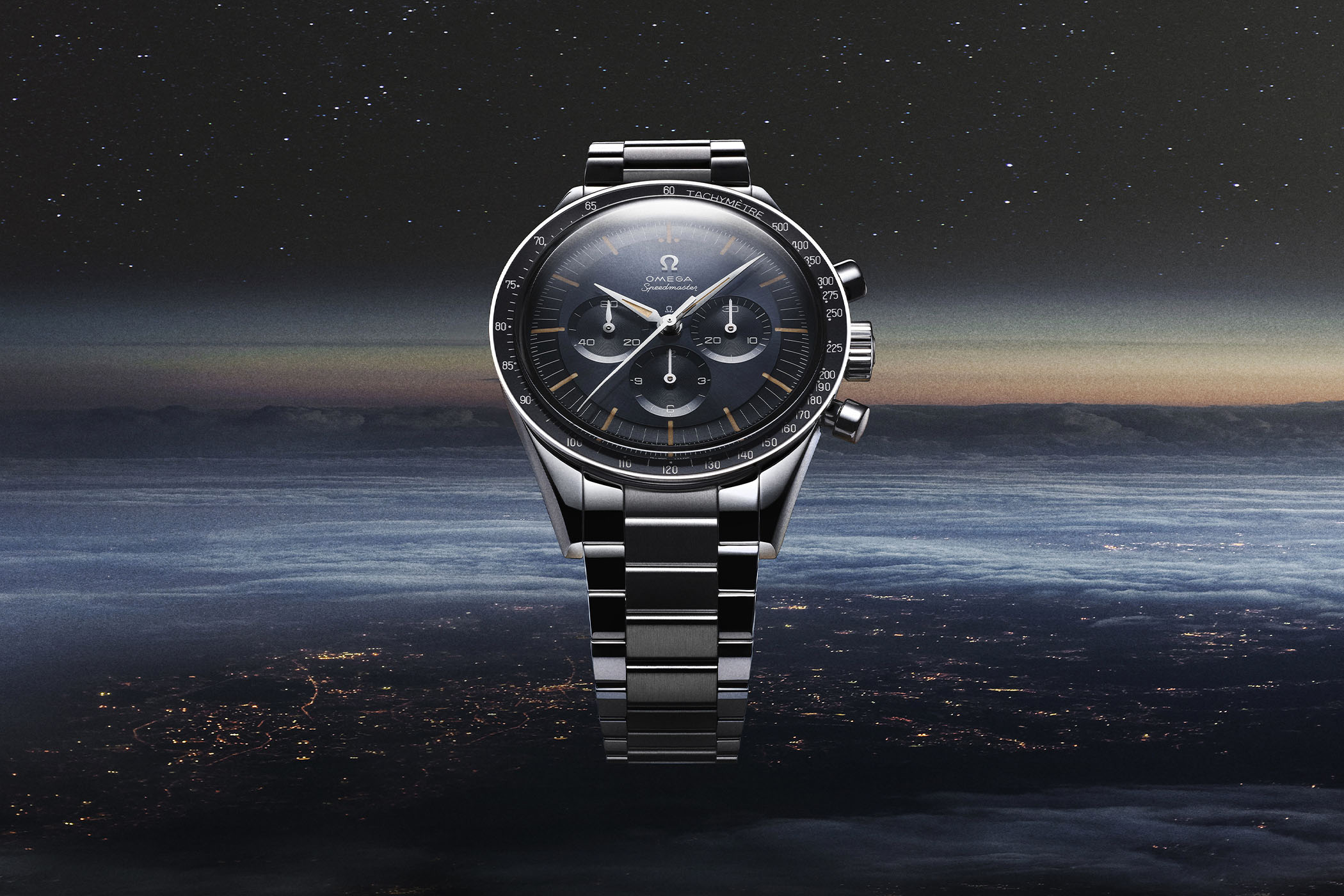
Without a doubt, one of the most iconic chronographs ever produced by the Swiss watchmaking industry is the Omega Speedmaster, born in 1957 (as part of a trilogy of Master watches). However, the Speedmaster shot to notoriety in 1969 when the watch landed on the Moon as part of the Apollo 11 mission – earning its title as the Moonwatch. However, before it became flight-qualified by NASA and before it became the watch on the Moon, the space story of the Speedmaster took shape gradually, just like the American Space programmes. And it all started 62 years ago, on October 3rd, 1962, onboard the Mercury-Atlas 8 mission, on the wrist of astronaut Walter “Wally” Schirra, wearing what would become “the first Omega in Space.” In 2012, Omega released a special edition Speedmaster FOiS, discontinued in 2021. But lo and behold, the Speedmaster First Omega in Space is back in 2024, with tons of vintage touches, a modern movement and a surprising grey-blue dial.
THE FIRST OMEGA IN SPACE
The links between Omega and space exploration started before NASA’s tests on the Speedmaster and its qualification as the official watch of astronauts, which happened in 1965. Indeed, most early astronauts were test pilots, and they understood the need for a timekeeping instrument while flying. Gagarin, the first man in space (April 1961), already had a watch around his wrist. The same happened with American astronauts who, way before NASA supplied them with a flight-qualified timepiece, already wore watches in space.

As for an Omega wristwatch, the story goes back to October 3rd, 1962, and the Mercury-Atlas 8 mission. It was the fifth United States crewed space mission, part of NASA’s Mercury programme. Astronaut Walter “Wally” Schirra orbited the Earth six times in the Sigma 7 spacecraft during a nine-hour flight. And, while this was the longest US crewed orbital flight yet achieved, as far as we’re concerned here, this mission would remain historically important because it was the first time a Speedmaster went into space. Below, images of Wally Schirra wearing the Speedmaster during test procedures (all images by NASA).
The story behind this watch is simple: it was Wally’s personal watch, bought privately. The watch in question is a second-generation Speedmaster, a reference CK2998-4, to be precise. Schirra wasn’t the only astronaut to use a privately owned Speedmaster in space. So did Gordon Cooper, also with a CK2998.
The Speedmaster CK2998 is the second generation of this watch, with subtle evolutions compared to the inaugural CK2915 model. While sharing the same symmetrical case with straight lugs and the same movement – calibre 321 – the CK2998 differs mostly regarding its bezel and its hands. While the first generation Speedmaster was fitted with a steel bezel and an engraved tachymeter scale, the CK2998 introduced the black anodized aluminium bezel that would become the norm for all following references. The earliest models featured a “base 1000” tachymeter scale, while the CK2998-4 worn by Schirra came with a “base 500” scale. The other noticeable feature of the CK2998, which was found only in this generation, was the distinctive set of hands – the so-called Alpha hands.
The 2012 Speedmaster First Omega in Space
At Baselworld 2012, to celebrate the 50th anniversary of the 1962 Mercury-Alpha 8 mission, Omega launched the Speedmaster “First Omega in Space”, a retro-inspired watch which was a numbered special edition, not a limited edition. The watch was available from 2012 to 2021. The main difference between a classic Moonwatch of that time and the FOIS is the case. Inspired by the CK2998, the original Speedmaster First Omega in Space was equipped with a 39.7mm symmetrical case (the same diameter as used in 1962), without side protection and with straight lugs. Also, the watch was equipped with a sapphire crystal, not a Hesalite crystal. The black bezel was fitted with a “base 500” tachymeter scale, but it did not have the historical “dot over 90” and “dot diagonal 70” elements.
The other major update concerning the original 2012 Omega Speedmaster First Omega in Space was its dial… different from a Professional Moonwatch, yet not entirely faithful to the vintage CK2998. Omega retained a so-called flat dial, without the usual step found on the periphery of vintage dials, yet with tall hour markers, vintage-styled Omega and Speedmaster inscriptions and an applied ? logo. And, of course, there was a set of metallic Alpha hands. Under the seahorse-stamped back was the classic hand-wound calibre 1861 (no co-axial, no Master Chronometer). Overall, a handsome watch combining modernity in the execution and vintage style in the design.
The New 2024 Speedmaster First Omega in Space
For its return, the Omega Speedmaster FOiS (First Omega in Space) does things in a rather interesting way. Or should I even say with strong appeal? While the Professional Moonwatch has a retro flair that comes from its timeless appeal (practically unchanged since the late 1960s), the new Speedmaster First Omega in Space plays hard on the vintage touches. And it all starts with a case that respects the original CK2998 of 1959, with a 39.7mm diameter, symmetrical design and straight lugs. That being said, this new case is slightly different from the 2012 model – different shape of the lugs and different finishes. It’s also thinner than before, at 13.4mm (14mm in the past) and has a lug-to-lug of 48mm. Water-resistance is still rated at 50m.
Then comes the bezel. First of all, fans of vintage models will like the fact that the insert is still made of black aluminium and not ceramic. Second, it features the Speedmaster’s essential tachymeter scale, including the “Dot Over Ninety” (DON) that is synonymous with the earliest Speedmaster models – something that was missing from the 2012 edition. Omega also reworked the crystal. And while the look might be confused with Hesalite, it’s actually a brand new sapphire crystal shape that doesn’t have the usual chimney-like design as seen in other Speedies. It also incorporates the ? in the centre and has AR coating on the inner face.
What’s truly new here is the dial, which has not only changed in shape but also comes in an unprecedented colour and finish. To replicate the tone of some CK 2998 watches produced in the 1960s, Omega has given the 2024 Speedmaster First Omega in Space a sunray-brushed dark grey-blue dial. Another evolution, to remain true to the look of vintage models, the Speedmaster FOiS returns to a step dial, while the 2012 edition had a flat dial. It comes with an applied ? logo, and the Omega and Speedmaster logos use the historical font found on the CK2998.
A closer look at this new 2024 Speedmaster FOiS reveals classic details, such as the use of the mandatory metallic Alpha hands for hours and minutes. The central chronograph hand is straight and executed in white, while the sub-dials have either alpha (metallic) or baton hands (white), just like the 2012 edition. A point of debate, all luminous inserts (markers and hands) are executed in a dark, vintage-like Super-LumiNova. Personally, I like the looks that not only pair well with the grey-blue colour but also add great charm – and it makes it different from a classic Moonwatch.
Turning the watch over, you’ll see a solid steel, double-step caseback. It comes with several historical and commemorative engravings, such as the emblematic Seahorse medallion and the engravings “SPEEDMASTER”, “THE FIRST OMEGA IN SPACE” and “OCTOBER 3, 1962”. But history isn’t the only point here, as inside the 2024 Speedmaster First Omega in Space is the modern calibre 3861. Now the base for almost all manual Speedmaster models (including the Professional Moonwatch), this hand-wound movement incorporates a co-axial escapement, a silicon hairspring and is highly resistant to magnetic fields. It’s also Master Chronometer certified. Even if hidden, it’s nicely finished with rhodium-plated bridges.
For this new FOiS, Omega offers the choice between a bracelet or a leather strap (all at 19mm). The latter, closed by a pin buckle, is available in black or brown, with beige stitchings. The steel bracelet is a so-called flat-link, which combines polished and brushed surfaces and is closed by a folding clasp with practical micro-adjustment.
Availability & Price
The 2024 Omega Speedmaster FOiS (First Omega in Space) is released as part of the permanent collection and isn’t limited. It is now available from the brand and retailers. It is priced at CHF 7,100 or EUR 8,300 on a leather strap and CHF 7,500 or EUR 8,700 on a steel bracelet. As such, it’s 100 euros less expensive than a Professional Moonwatch with a sapphire crystal.
For more details, please visit omegawatches.com.

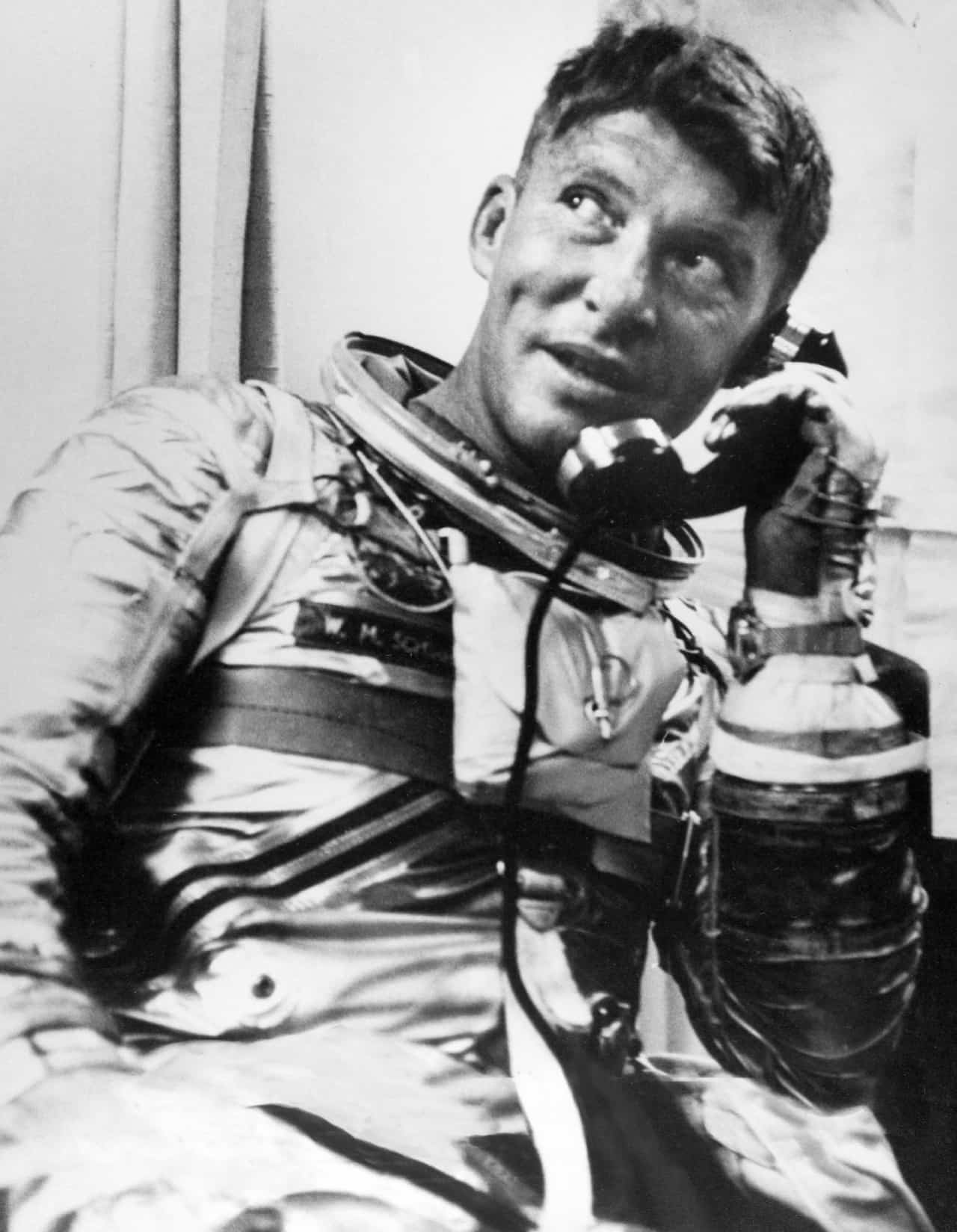
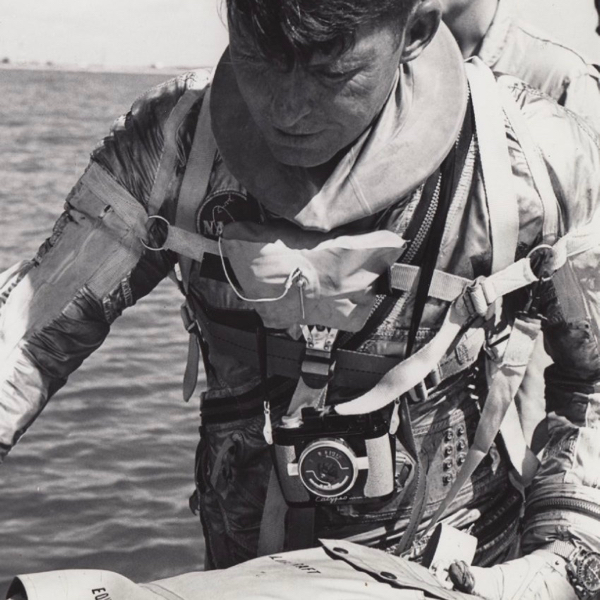
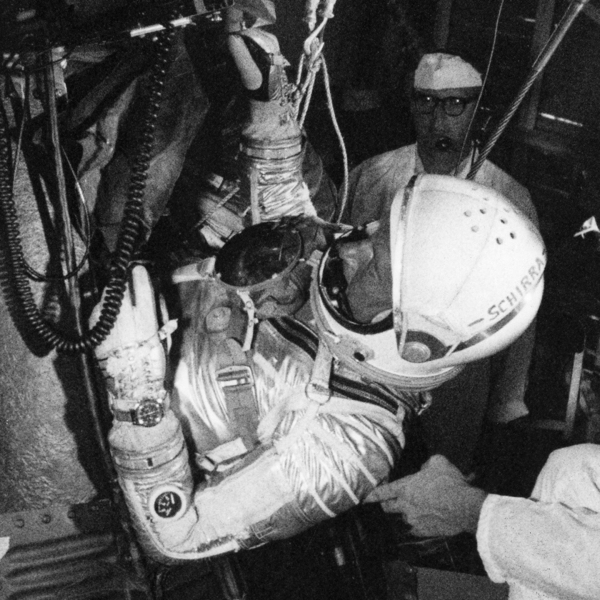
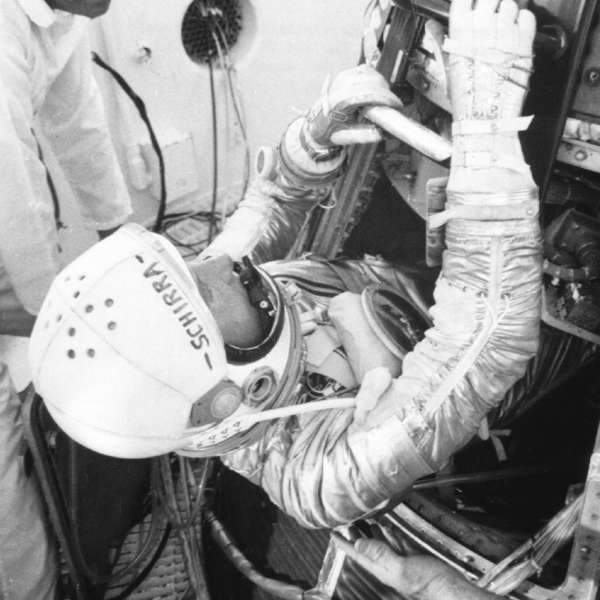
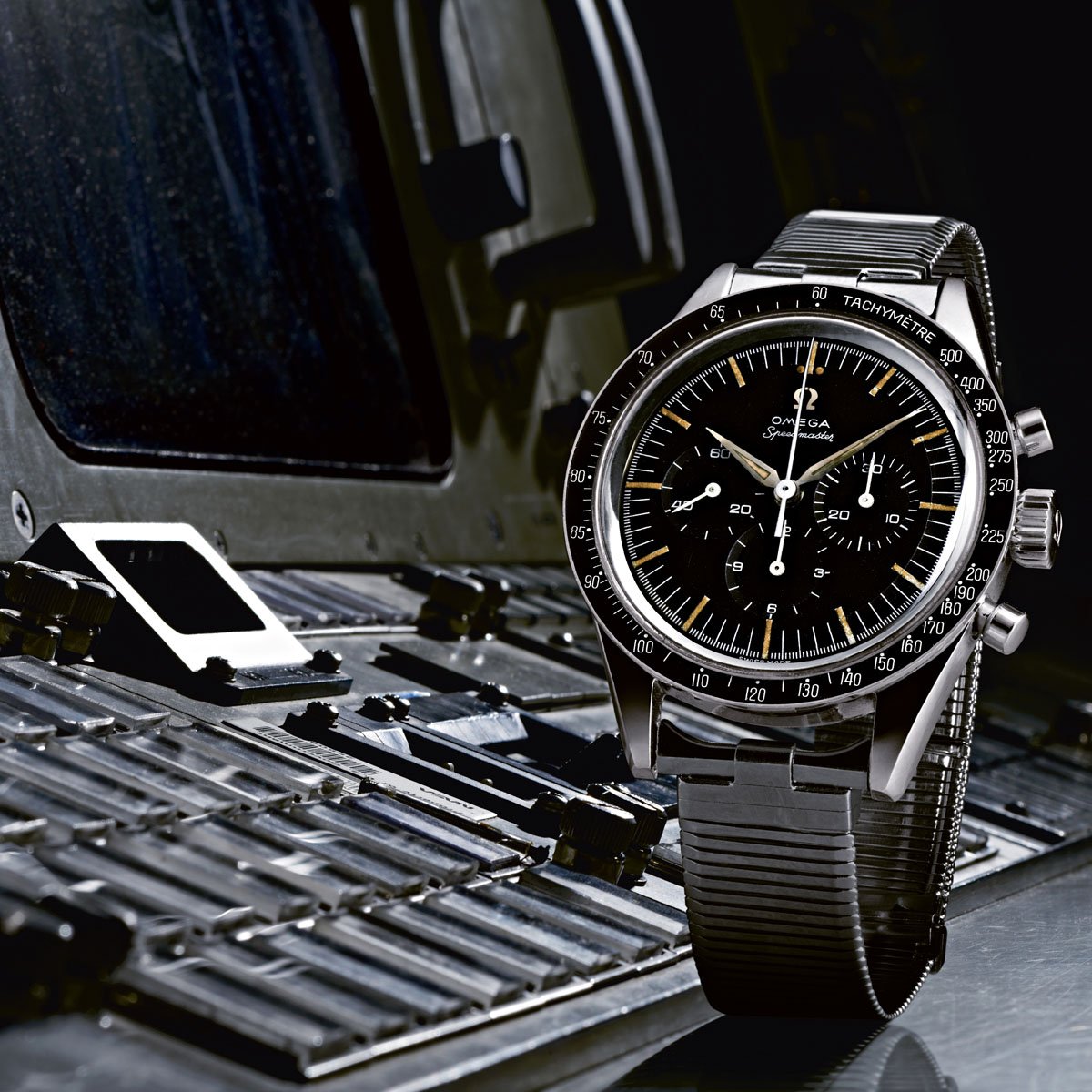

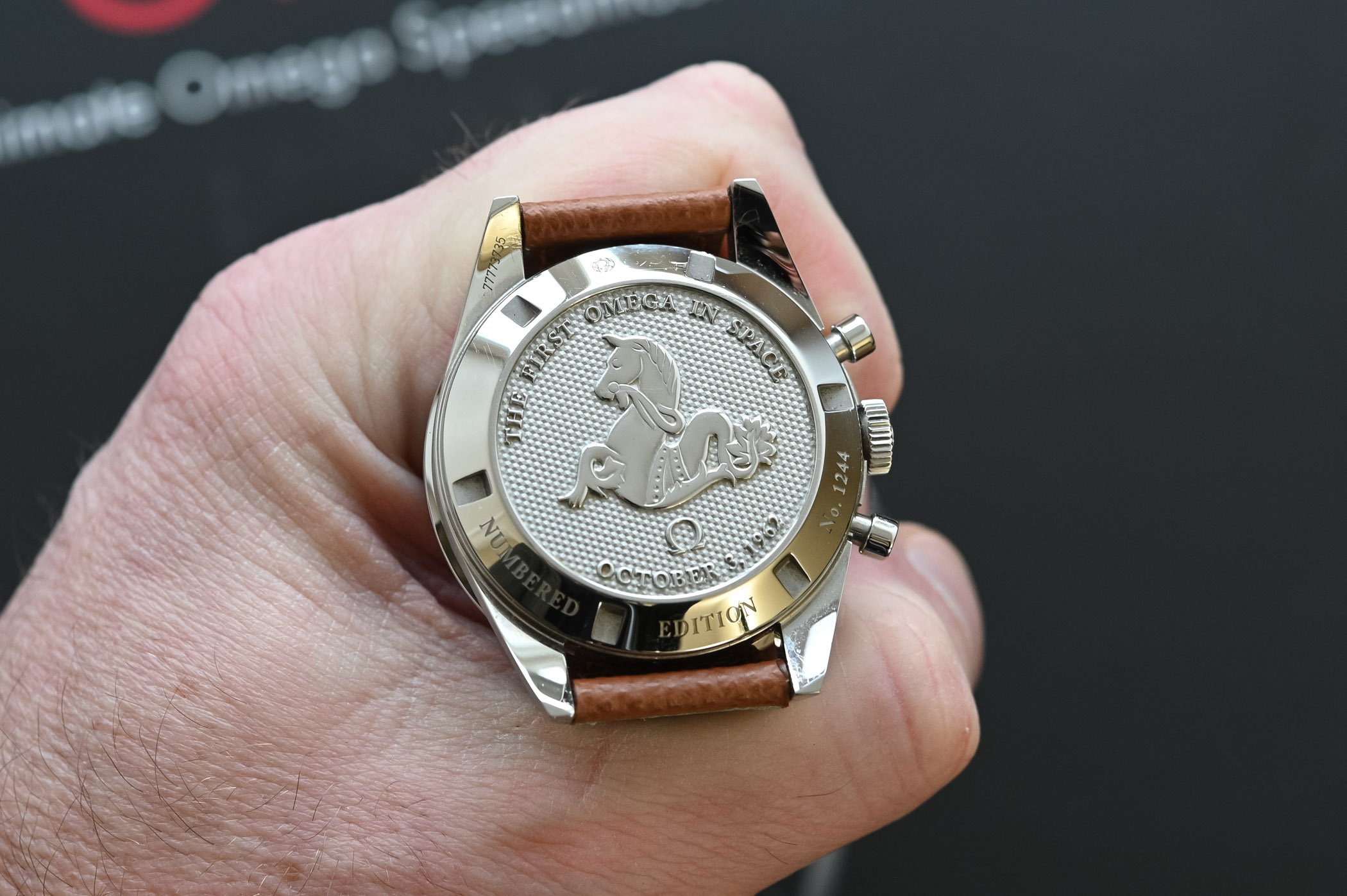
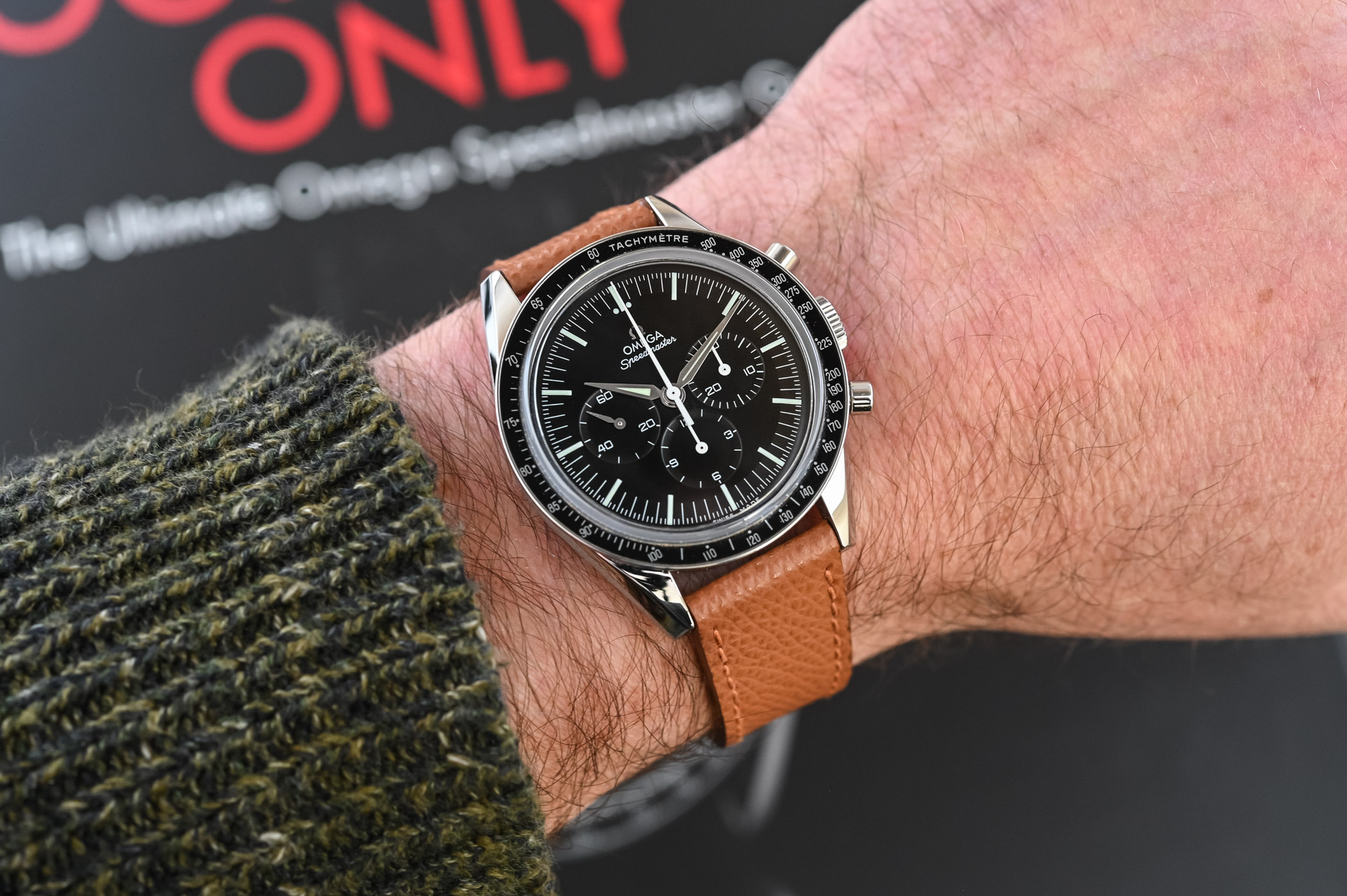

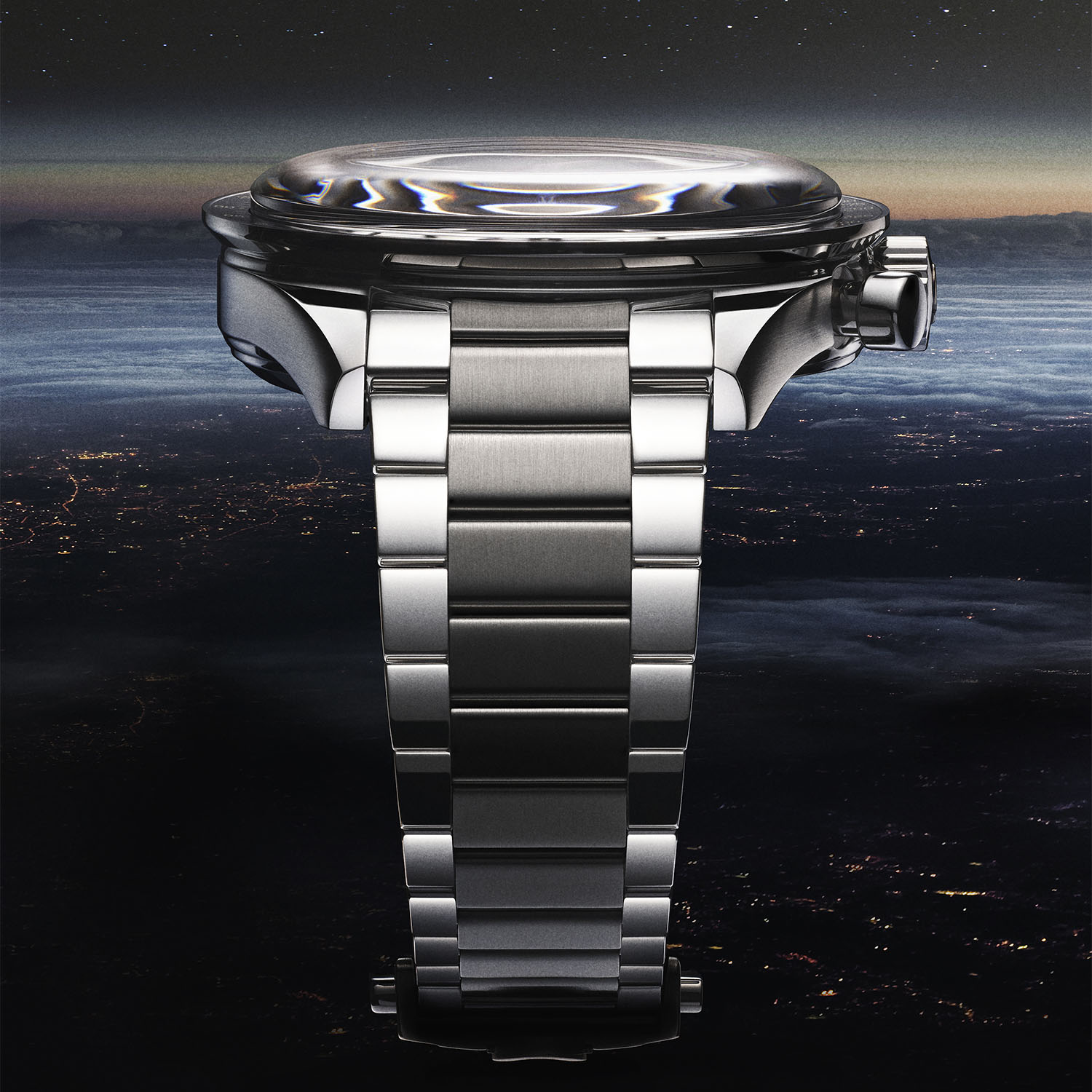
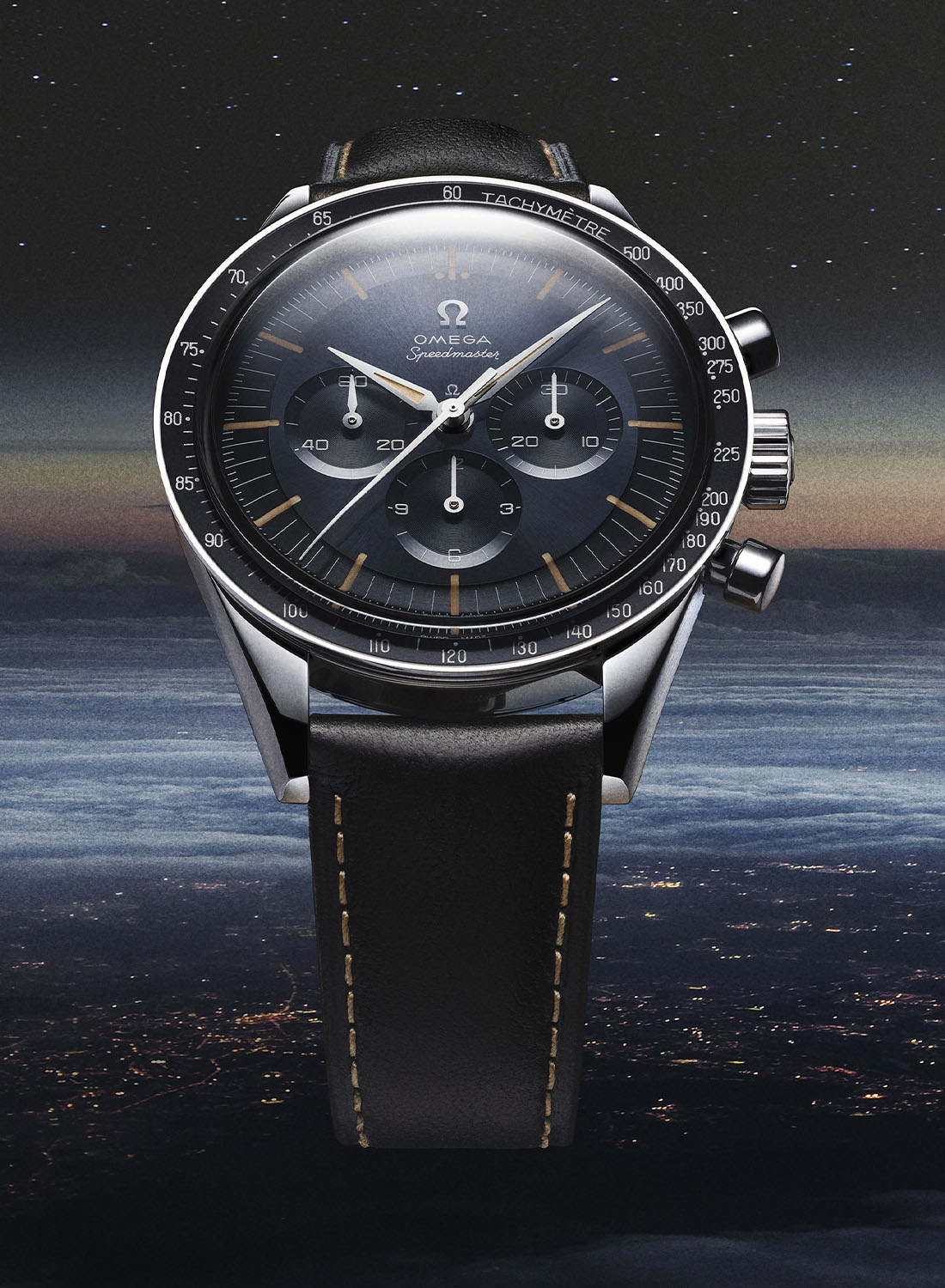
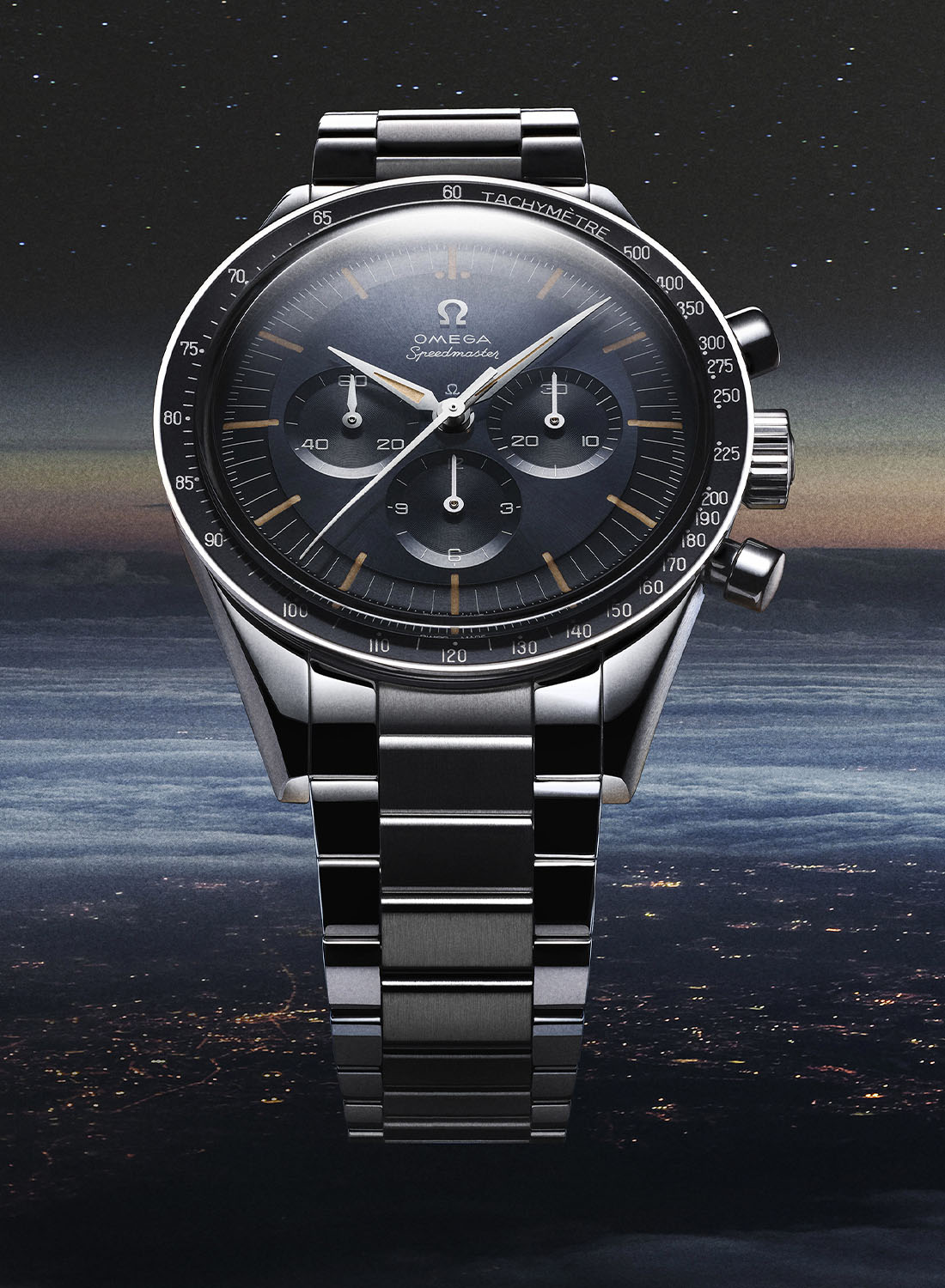
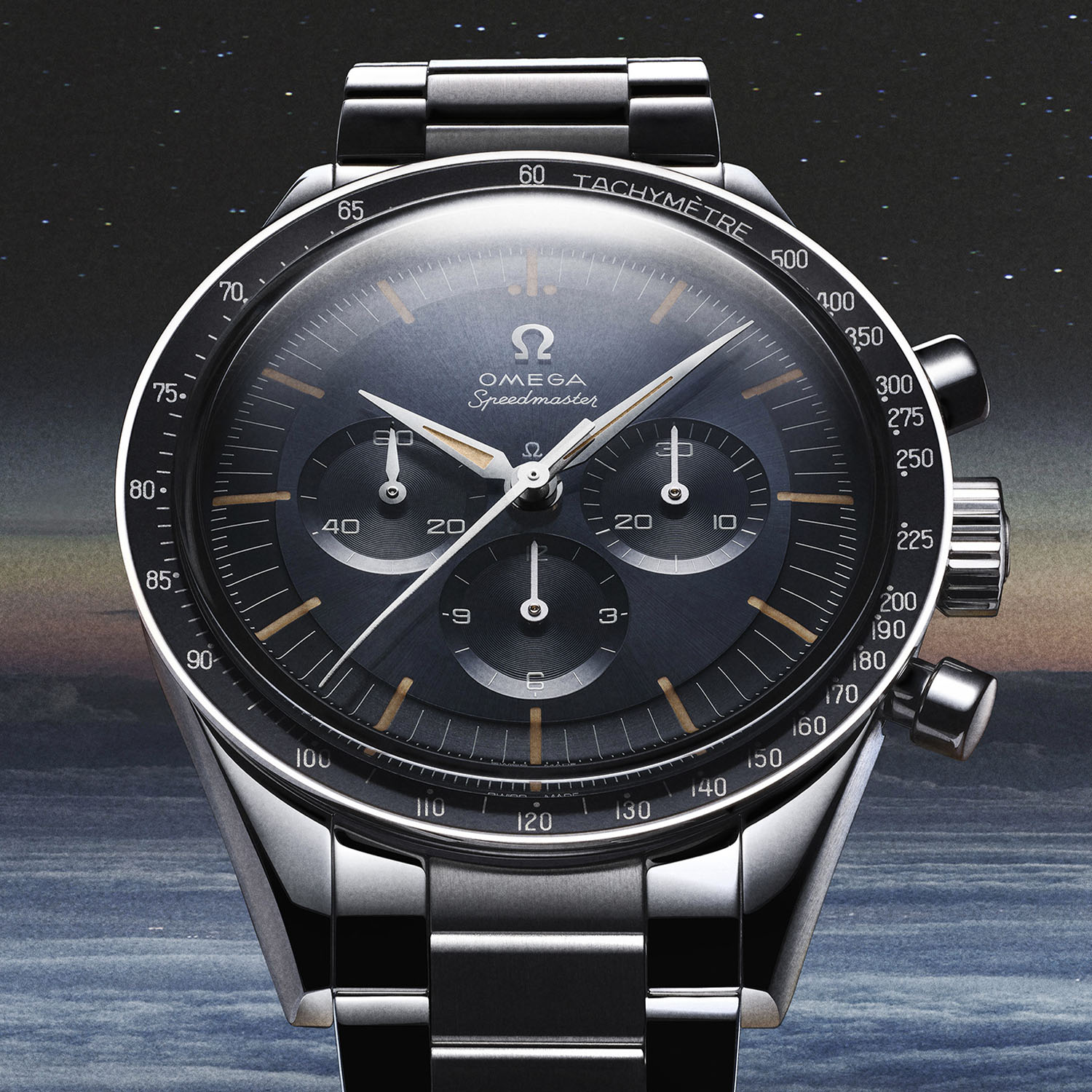
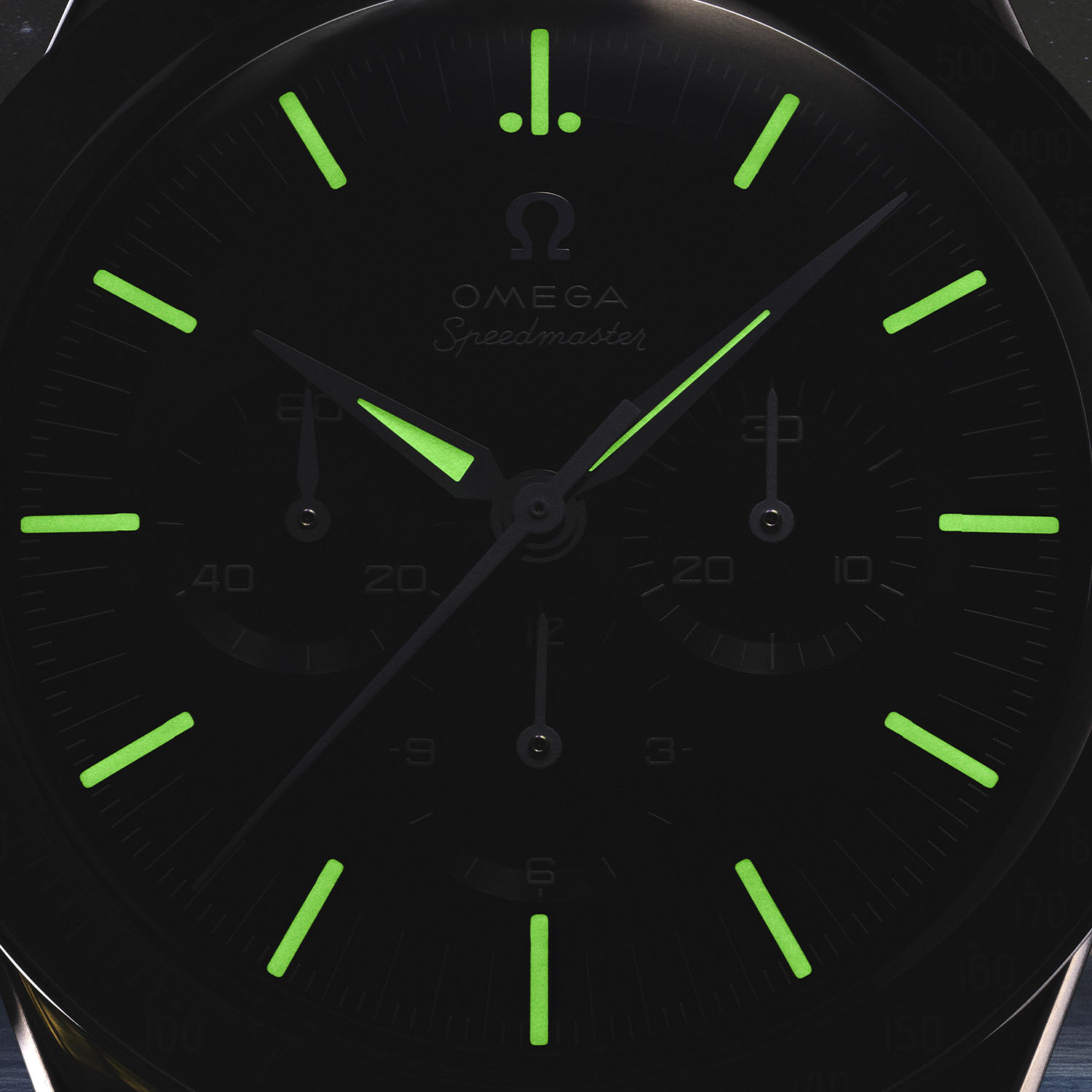
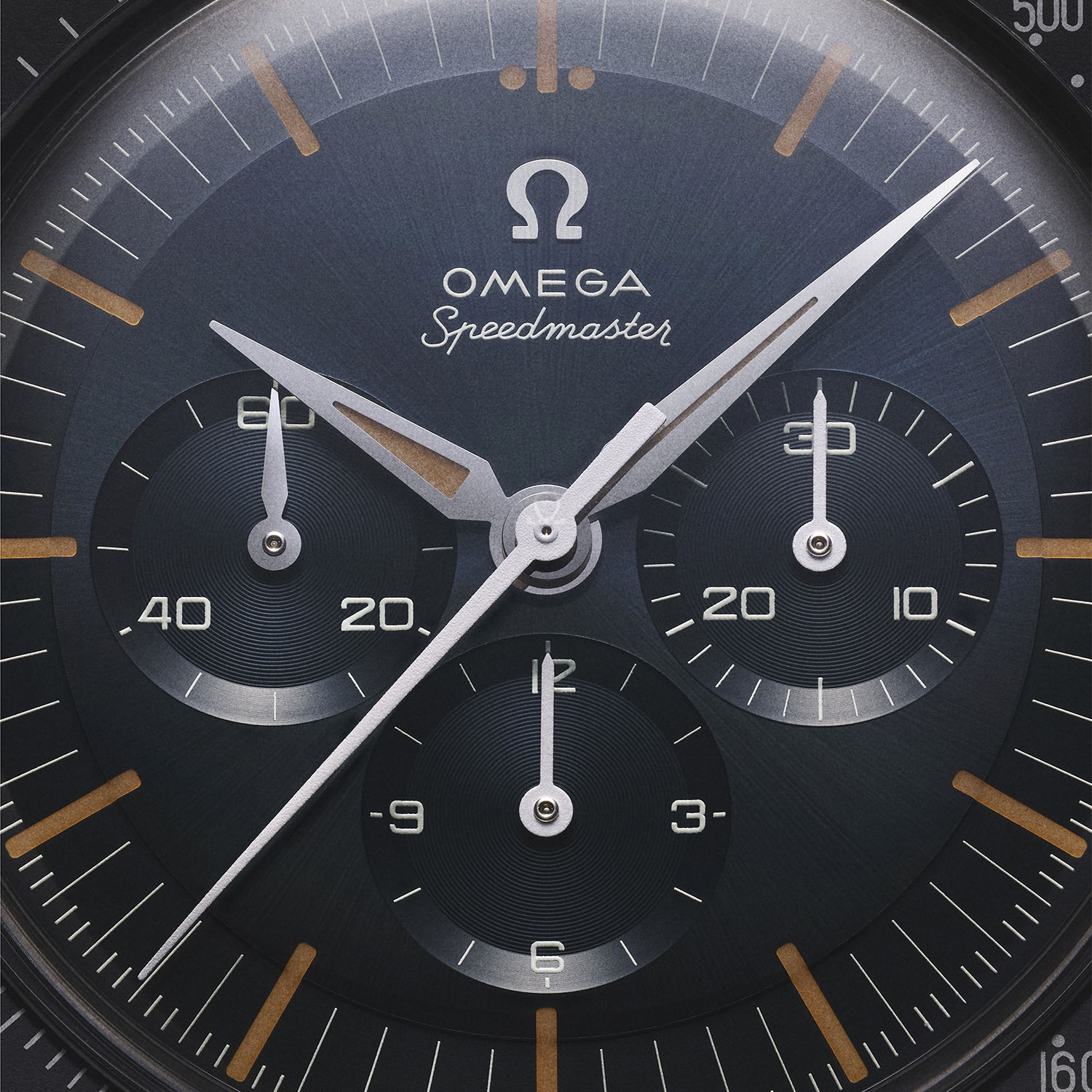
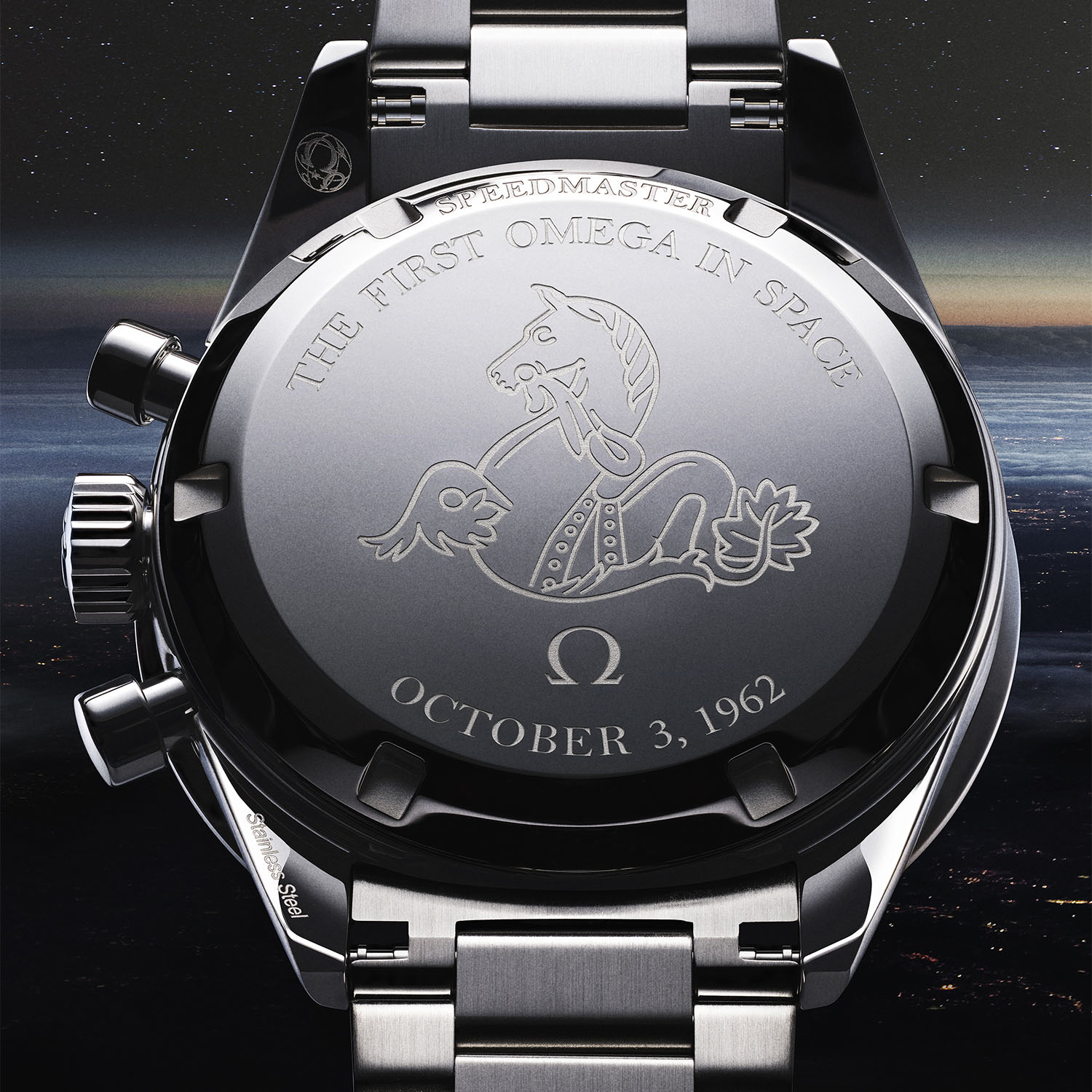
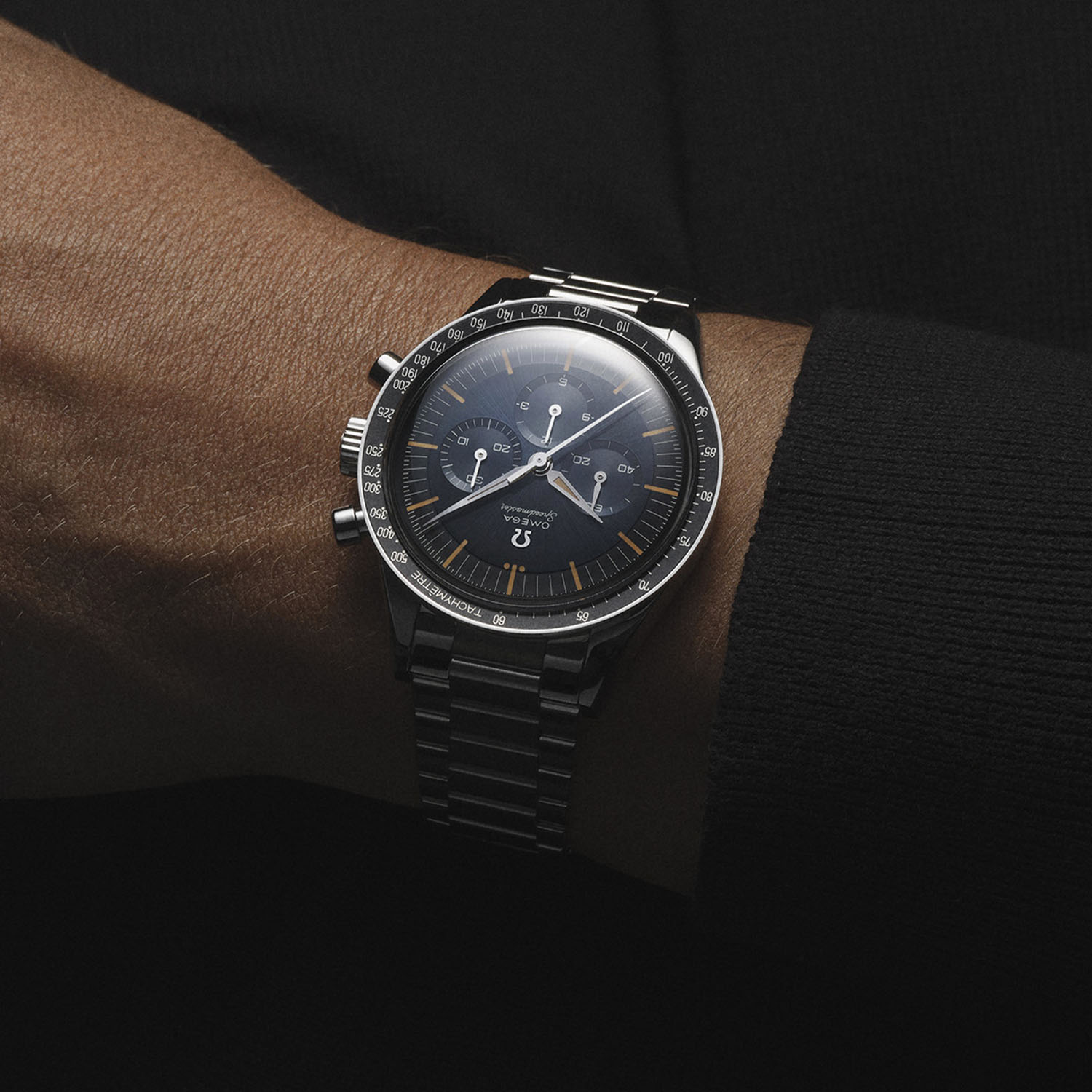

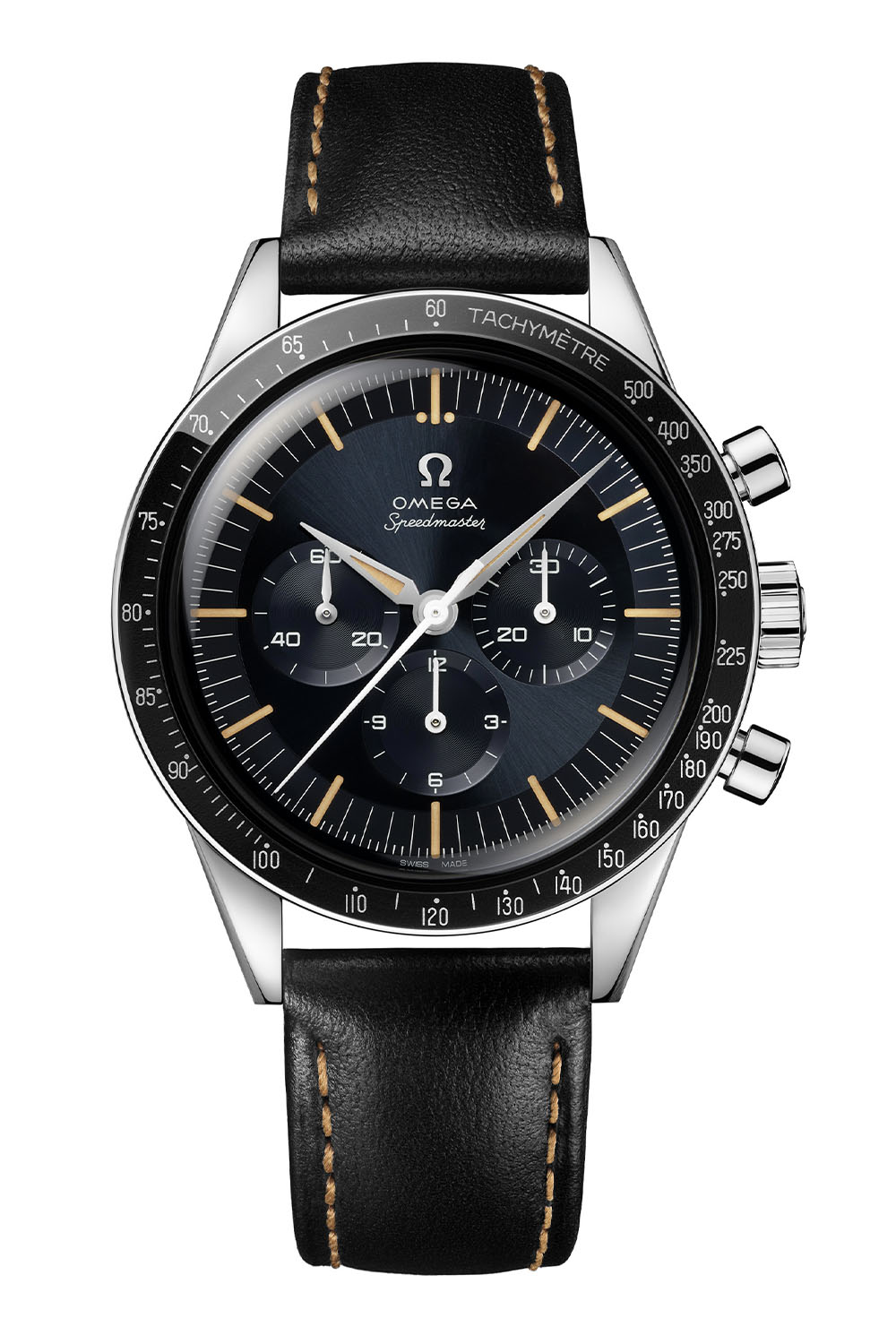
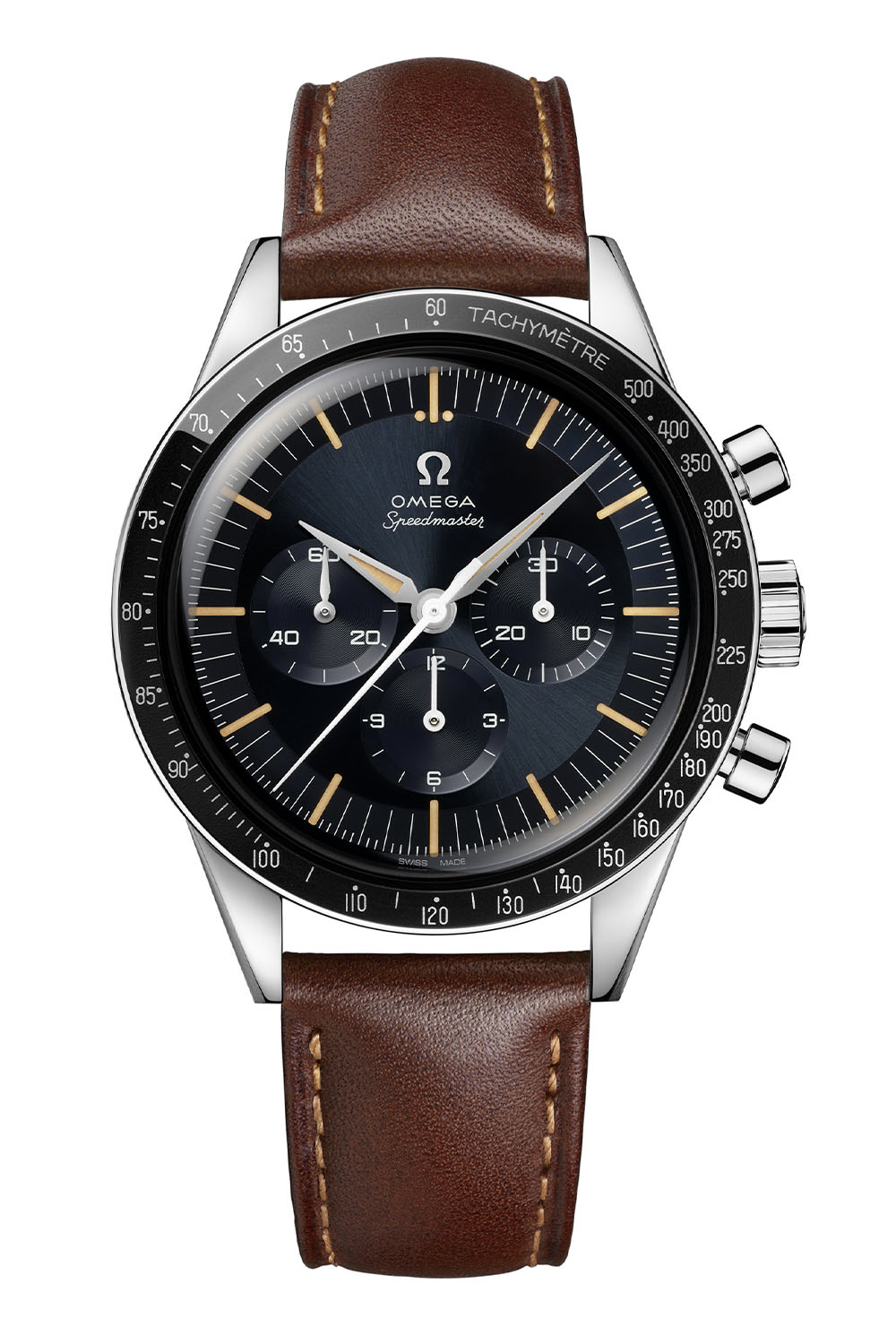



6 responses
Love it!
I sold the previous FOiS in Sedna gold, beautiful as it was, after less than six months – thickness in combo with heavy gold had it ”flopping around”, never sitting as I wanted it to.
Now considering adding this beuty instead.
At last. Order gone in.
I can’t unsee that little penis in lume at 12h mark.
Anyways l think this is next watch in my collection, hopefully I can get my hands on one.
@Steve – that rather peculiar feature you mention has always been part of the Speedmaster, and is found on many other pilots watches.
Curious what the taper to the clasp is – I’m not a fan for the extreme taper on the current 3861 moon watch (although I understand that I’m in the minority there).
The Speedmaster moon watch was going to be my next watch. Then I went to the AD and got to see and wear it , it seems so small and frail compared to how it looks in photos and videos. So I’ve decided to go with the Seamaster instead.